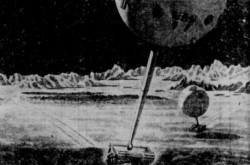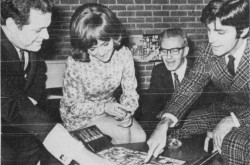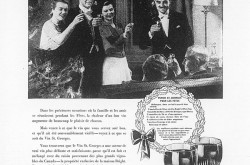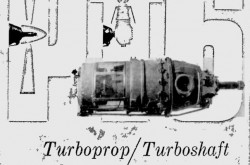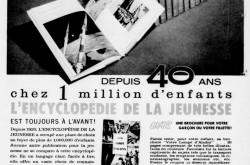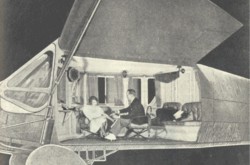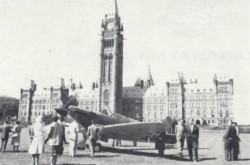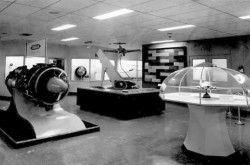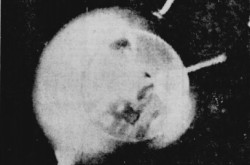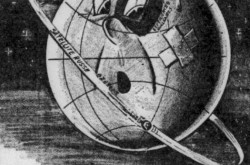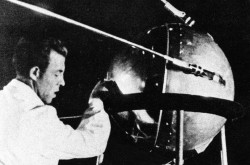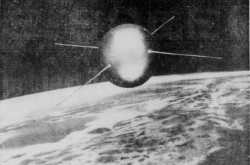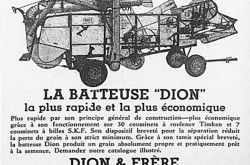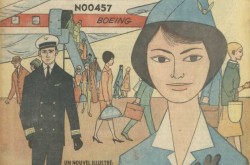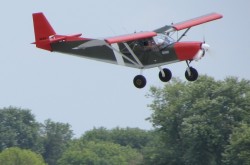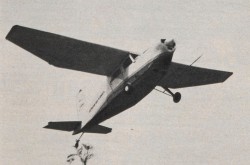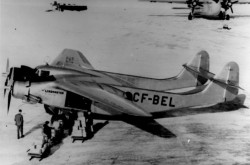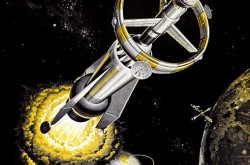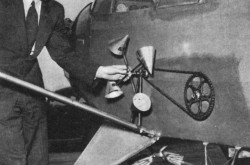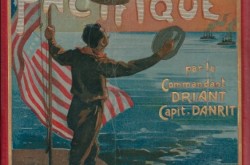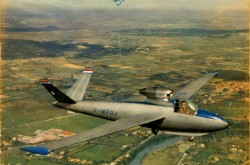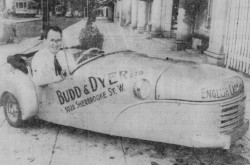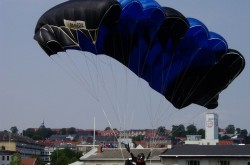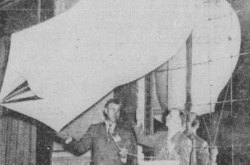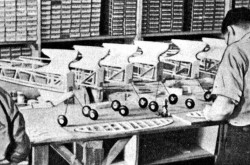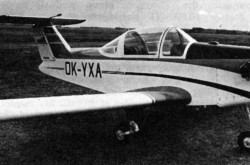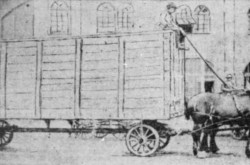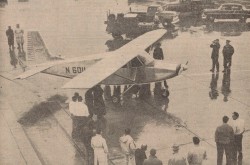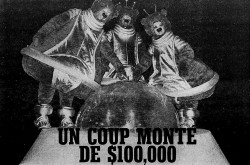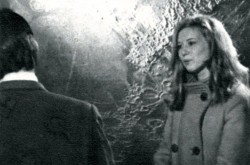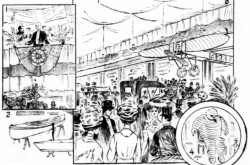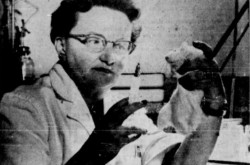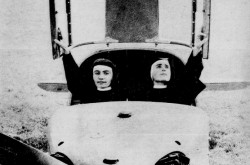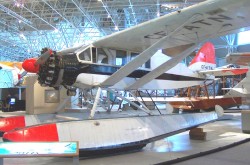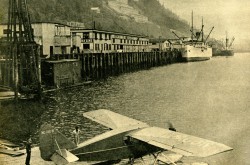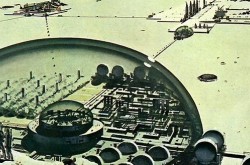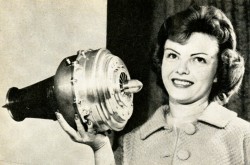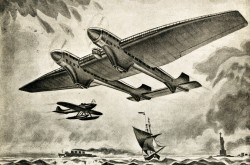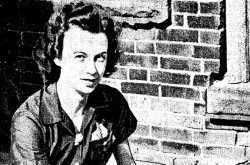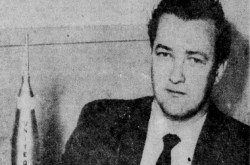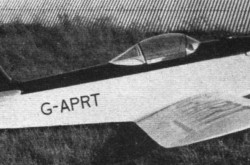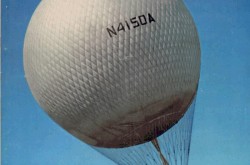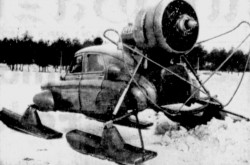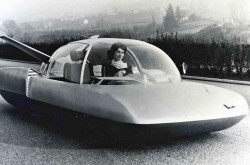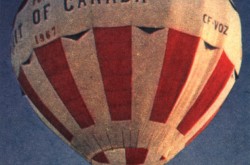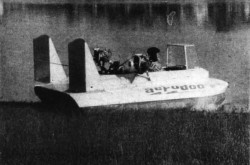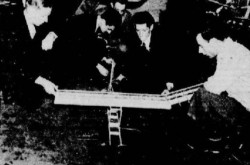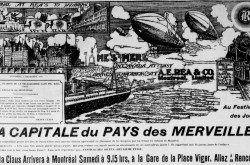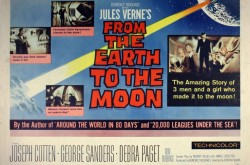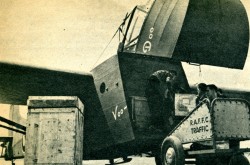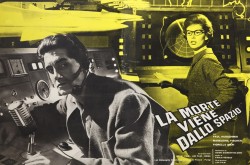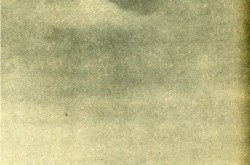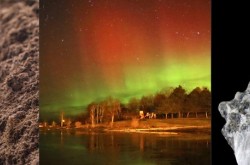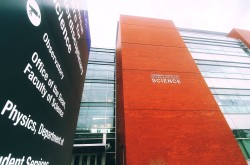“Did astronomers at the Dominion Observatory discover a new planet? Read all about it!” François Charles Pierre Henroteau, Miriam Seymour Burland and Planet ‘X’ – or was it Planet ‘Y’, part 4

Space, the final frontier. This is the final part of our journey. Its 4-week mission: to peer into the vastness of space, to examine the possible discovery of a trans-Neptunian planet by Canadian astronomers, and to boldly see what no human had seen before. (Hello, EP, EG and SB!)
Are you ready to dive into the 4th and final part of this article on the possible discovery of a new planet by Canadian astronomers, in April 1930, my reading friend? Good, good.
And you have a question, do you not, my delightfully curious reading friend? Who was the Safronov mentioned in the caption of the photograph we have just gawked at? A good question. Viktor Sergeevich Safronov was a Soviet astronomer active during the years of the Cold War, but back to our story.
By the time the group of illustrations with which we ended the 3rd part of this article was published, the dearth of new details about the celestial body spotted by two scientists of the Dominion Observatory, in Ottawa, Ontario, François Charles Pierre Henroteau and Miriam Seymour Burland, a celestial body identified by some as Planet ‘Y’, meant that articles about it all but vanished from Canadian newspapers.
And no, that Planet ‘Y’ was not the trans-Neptunian planet, then known as Planet ‘X’, which would soon become known as Pluto. It was the new planet possibly discovered by Canadian astronomers in April 1930, but you digress.
Readers of Canadian newspapers could, however, read about the opinion expressed by a well-known American professor / mathematician / astronomer. William Duncan MacMillan was of the opinion that Planet ‘X’ was probably not a planet. It was probably a comet, albeit an unusual one perhaps, or even a group of comets. He thought that whatever it was, the object had reached its closest point to Earth around 1900 and would not be back until the year 5000 or so.
The French astronomer / mathematician / professor Ernest Esclangon, director of the Observatoire de Paris, in… Paris, France, also thought that Planet ‘X’ was a comet.
And yes, that Planet ‘X’ was the trans-Neptunian planet which would soon become known as Pluto.
Given the hoopla of the previous days surrounding trans-Neptunian planets, the topic of a talk Henroteau was scheduled to make on 29 April, in Montréal, Québec, before members of the Montreal Centre of the Royal Astronomical Society of Canada, I think, was more or less changed from a look at a branch of optics which deals with measurements of light in terms of its perceived brightness to our eyes, in other words a look at photometry, to a look at said trans-Neptunian planets.
The venue, the École polytechnique de Montréal, an institution affiliated with the Université de Montréal, two places of higher learning located in… Montréal, was mentioned on several occasions in our stellar blog / bulletin / thingee, and this since December 2018. The university, on the other hand, was similarly blessed many times since May 2018.
And yes, Henroteau’s talk was the first that researcher made on his role in our convoluted story.
On 1 May, after providing an overview of the history of astronomy, Henroteau described how he and Burland had discovered Planet ‘Y’ to the members of the Société d’études scientifiques of the Collège Mont Saint-Louis of Montréal, the first secondary school opened in Québec by the Congrégation des Frères des écoles chrétiennes of the roman catholic church, and this back in 1888.
During that presentation, Henroteau pointed out that neither Planet ‘Y’ nor the trans-Neptunian planet which would soon become known as Pluto were the celestial body that Percival Lowell, you remember him, do you not, had begun to look for back in 1906. He also thought that other objects similar to the two discovered in 1930, in other words to Planets ‘X’ and ‘Y’, might well be spotted in future weeks, months or years.
On 8 May, in Ottawa, Henroteau spoke about Planet ‘Y’ at a luncheon held under the auspices of the University Club of the… University of Ottawa, in… Ottawa. According to him, that celestial body and its neighbour, Planet ‘X’, were about the size of the Earth. Planet ‘Y’ might, however, have been a tad larger than Planet ‘X’.
Incidentally, why is it that guys think that size matters? Sorry, sorry, I digress.
Henroteau mentioned yet again that other objects similar to the two discovered in 1930 might well be spotted in future weeks, months or years, thus duplicating an earlier fruitful period, in the late 18th and early 19th centuries.
As we both know, the first quartet of asteroids known to science were discovered between January 1801 and March 1807. The new objects which might be discovered in weeks, months or years after April 1930 might, perhaps, prove to be larger than asteroids.
Henroteau’s use of the moniker Planet ‘Y’ to describe the celestial that he and Burland had spotted did not go unnoticed. Nay. At least a dozen Canadian newspapers (11 in Ontario and 1 in Québec) published articles which dealt with his talk at the University Club.
Mind you, it should be pointed out that the moniker Planet ‘Y’ had been used in the United States at least a week before Henroteau uttered it in Canada.
Incidentally, the last 1930 trans-Neptunian talk that yours truly came across took place in Ottawa in mid-May. Said talk was made by Robert Millford Motherwell, a Canadian astrophysicist / populariser of science who worked at the Dominion Observatory, in front of members of Ottawa’s Kiwanis Boys Club, a young boys club created and sponsored by the local chapter of an American organisation, the Kiwanis Club, at the behest of another American organisation, the Boys Club Federation of America.
In late April, in “La comète X,” one of the countless “Billet du Matin” that he wrote for the daily newspaper Le Canada of Montréal, a Franco Canadian chansonnier / review director / journalist / translator known under the pseudonym des Hameaux, wrote about the trans-Neptunian planet which would soon become known as Pluto and what he (seriously?) saw as a budding scientific disagreement regarding the paternity of the discovery of that planet or comet.
Incidentally, again, why do we always refer to the paternity of a discovery or invention, rather than to its maternity? After all, is not necessity the mother of invention? But back to our story.
To quote Pierre-Marcel Bernard, yes, to quote the aforementioned des Hameaux, lighthearted words translated here,
scientists are arguing over the paternity of comet X and the public does not care much. It has become skeptical and thinks, like Joséphin Soulary,
‘Any happiness that the hand cannot reach is but a dream.’
Not only can we not reach comet X, but we do not even see it. So, it is a dream. Q.E.D.
An unknown scribbler working for The Border Cities Star, a daily newspaper hailing from Windsor, Ontario, might or might not have put greater faith in the words of astronomers, according to a mid-May snippet: “In regard to the newly discovered planet, we are advised that we ‘must take the astronomers’ word of it.’ That’d be a whole lot easier, though, if the astronomers’ words weren’t one of ten or eleven syllables.”
By the way, Joseph Marie Soulary, better known as Joséphin Soulary, was a 19th century French civil servant / poet / library inspector / librarian. The brief translated quote within the quote we just saw came from his 1858 book of poetry, Sonnets humouristiques.
Yes, yes, humouristiques and not humoristiques. Soulary and / or his publisher seemingly had a well-developed sense of humour.
The same could be said of the unknown individual who penned a snippet published in a late April edition of The Saskatoon Star-Phœnix of… Saskatoon, Saskatchewan: “Might it be that what looks like a new planet is merely one of the baseballs the Babe clouted the year he made his home run record? Considering elapsed time, the distance would be just about right.”
The Babe in question was of course the famous American professional baseball player George Herman “Babe / Bambino / Sultan of Swat” Ruth. In turn, the single season homerun record in question was set in late September 1927.
Incidentally, to reach the orbit where the new planet was thought to be, the baseball in question would have been compelled to travel at an average speed of 380 000 or so kilometres/hour (more than 235 000 miles/hour). By comparison, the speed of the fastest baseball on record is 197 or so kilometres/hour (122.4 or so miles/hour). That baseball was hit in late August 2022.
And yes, it is possible that a baseball reached a higher speed in more ancient times.
Another Ruth-ian quip came in early May, in Sherbrooke Daily Record of… Sherbrooke, Québec, the home city of yours truly: “It’s strange that the ninth planet, away in the outfield, came in close enough to be recognized while Ruth is still doing good.”
And yes, my baseball-loving reading friend, Ruth was an outfielder, a slugging outfielder to be more precise.
Incidentally, both of those Ruth-ian quips were American, and not Canadian, in nature. Given that, yours truly seriously though about ignoring them in this Canada-centered article. I chose to keep them. Please do not scold me, my surprisingly patriotic reading friend.
A perhaps slightly more sarcastic and, seemingly, 1 000% Canadian example of planetary humour appeared in a late April edition of The Border Cities Star of Windsor: “Of course, when he gets rested up and all that, Admiral Byrd can take a trip up to the new planet and claim it for the United States.”
The admiral in question was actually a rear admiral, the lowest rank within the admiral family of military ranks. The name of that United States Navy officer and polar explorer was Richard Evelyn Byrd, Junior.
In late April 1930, Byrd was at sea, as were the many people who had accompanied him, on their way back to the United States after a 15 or so month long expedition to Antarctica. And yes, he had claimed some parcels of that frozen hell for the United States in late 1929.
As well, Byrd was aboard the aircraft which made the first flight over the South Pole, in late November 1929. He even dropped a small American flag on that point of our globe.
Byrd’s claim that he had been aboard the aircraft which made the first flight over the North Pole, in May 1926, might not be as ice-solid, however. Indeed, an erased yet readable entry in his diary seemed to indicate that he and his companion, the United States Navy pilot Floyd Bennett, had turned back 265 or so kilometres (165 or so miles) short of their destination.
Do we have time for a slightly nasty comment, my ever patient reading friend, courtesy of The Leader-Post of Regina, Saskatchewan? Thank you. Here goes… “If the United States were not a prohibition country that fellow down there might have seen two new planets.” And yes, that quip was also 1 000% Canadian, I think.
The fellow in question was of course the American amateur astronomer mentioned in the 1st, 2nd and 3rd parts of this article, namely Clyde William Tombaugh.
A far longer quip might be worth quoting at this point, even though it was American in nature. After all, it was published in early May by a Canadian weekly newspaper, The Bridgeburg Review of… Bridgeburg, Ontario. In any event, you be the judge. By the way, the text in question had originally been published in The World, a well known newspaper hailing from New York City, New York.
With your permission, or without it if need be, yours truly will dispense with the usual style of quotation used in our blog / bulletin / thingee.
Beginning of quote…
Up in Ottawa, it seems, astronomers have discovered a new planet. It was found on an old photographic plate made by the Dominion Observatory in 1924, and had been overlooked at the time, which is a feat that makes the losing of a bass drum seem trivial by comparison, and almost ranks with that of the Garden Theatre in Richmond Hill, which missed its pipe organ the other day and found out it had been stolen.
Well, all we can say about this new planet is that we don’t care whether it gets lost again or not. The last planet we had, certainly turned out to be a terrible bust. In the beginning, it was a magnificent thing, so many times bigger than the earth, and so many million miles from the sun that the best minds of the country were challenged to find a name for it. But then it began to shrivel. Doubts were cast on its pretentions. According to some astronomers, it was a runt planet, such as it [sic] discovered by any observatory half a dozen times a year; according to others, a wandering comet; according to still others, nothing but a measly asteroid. In a few weeks the question of a name has become, to say the least, delicate; Tom Thumb has been rumored as a likely choice, as well as Cinder, Cocoanut, Four Flush and Flat Tire, the provisional designation at the moment being Planet X.
Possibly it would be well to let it go at that, and to call the Ottawa discovery Planet Y. When Planet Z comes in there will be no more letters at this end of the alphabet, and that will be the end of a most unfortunate business.
End of quote.
Incidentally, the individuals who raided the Garden Theatre, in New York City, in late April 1930, six teenage boys aged 14 to 17, did not take off with the whole kit and kaboodle. Nay. They only left with most of the metal pipes and all of the brass and copper fittings. Understandably enough, the keyboard was left behind.
In fairness to the management of the Garden Theatre, that establishment had been closed for some weeks when the theft took place. You see, workers were installing the equipment which would allow that establishment to present talking movies.
And no, my mischievous reading friend, yours truly has found no trace of any attempt to christen Tom Thumb, Four Flush, Flat Tire, Cocoanut or Cinder the trans-Neptunian planet which would soon become known as Pluto.
As the Spring of 1930 turned into Summer, the region of the celestial sphere where Planet ‘Y’ might be visible apparently proved to be too close to the Sun for a thorough search to be made, if the staff of the Dominion Observatory actually intended to conduct such a search.
As you presumably know by now, my astronomically aware reading friend, the celestial body known as the Ottawa Object or Planet ‘Y’ proved to be nonexistent.
Given that unavoidable fact, how could one explain the presence of something on the photographic plates examined by Henroteau and Burland? I wish I knew. That celestial body might perhaps have been Pluto. After all, no other planet-sized object has been spotted in our Solar system as of 2025. Indeed, chances are that no as yet undiscovered planet-sized object actually exists in the outer confines of our Solar system.
Let us conclude this story with a brief look at what happened to Henroteau and Burland.
Yours truly will devote a sizeable amount of space on the former, if only because he has been pretty much forgotten, unlike Burland who has her own Wikipedia page, available in Spanish, Euskara / Basque, English and Arabic. Shall we begin?
From the mid 1920s onwards, Henroteau had been working on the use of light sensitive devices, photoelectric cells for example, to capture the light of stars and create images of them.
By July 1933, Henroteau had the prototype of an electric, if not electronic camera he called the super eye. He also had many patents in the works or in his pocket.
Henroteau’s super eye, claimed the latter, “will make perfect television a reality, will increase the power of telescopes a million times, make possible the transmission of lengthy messages in fractions of a second, permit perfect action pictures of any event to be seen almost simultaneously anywhere in the world.”
At the time, more or less, Henroteau was associated with General Television of Canada Limited of Toronto, Ontario, a firm created for that purpose in September 1933. Would you believe there was talk of launching the production of television sets near Midland, Ontario, on the shores of Lake Huron’s Georgian Bay?
Well, the super eye would do all that it was supposed to do provided it proved practical to mass produce. The (small?) American concern Henroteau had signed an agreement with hoped that it would.
That firm was General Electronics Corporation, an entity founded by the (Canadian born?) American inventor / television pioneer Hollis S. Baird, who should not be confused with a more famous Scottish electrical inventor / engineer / television pioneer by the name of John Logie Baird, a gentleman mentioned in November 2021 and March 2025 issues of our very visual blog / bulletin / thingee.
Henroteau’s announcement understandably produced quite the splash, and this from Canada all the way to Australia.
By the way, Henroteau seemingly sold his television patent rights for the United States in 1936 to a technology giant mentioned in April 2022 and March 2025 issues of our eye opening blog / bulletin / thingee, Radio Corporation of America, in exchange for a large pile of dough, namely US $ 150 000, a sum which corresponded to close to $ 4 900 000 in 2025 currency. Wah!
In that regard, the following snipped, culled from the pages of an early February 1939 issue of the daily newspaper Le Droit of Ottawa, words translated here, might be of interest: “after two alleged sabotage attempts in one of the largest laboratories in the United States, M’ster Henroteau’s electron ‘tube’ did what the ‘little balloon” that our political hucksters have been talking about: it burst.”
An interesting if somewhat shocking snippet, would you not say (type?), my reading friend who was as surprised as I was? And no, yours truly was not able to confirm that acts of sabotage were in fact committed in a laboratory working on Henroteau’s ideas.
Incidentally, despite what has been said (typed?) in past decades, Henroteau did not invent the first modern television camera, but I digress.
Henroteau left the Dominion Observatory no later than October 1933, to further develop his television ideas.
Mind you, there have been suggestions that Henroteau was all but forced into retirement in order to preserve the reputation of the observatory. You see, he had allegedly made some very serious blunders in certain measurements. The catch with those allegations was that the blunders in question had taken place during the mid-1920s rather than the early 1930s. Mind you, again, those blunders might, perhaps, have been unearthed in the early 1930s. That, or Henroteau made additional serious blunders in the early 1930s.
In any event, Henroteau returned to Europe in 1936, or 1934. He joined the staff of the Université de Liège, in Liège / Lièche / Lîdje / Luik / Liege, Belgium, at some point and seemingly spent a lot of time at the Observatoire astronomique de Cointe, in Liège.
Henroteau did not sever all links with Ottawa, however. Nay. Indeed, he assigned a television patent to a long forgotten firm formed for that very purpose, namely Electronic Television Company Limited of… Ottawa, and this in January 1938. That announcement also produced quite the splash.
Henroteau might, I repeat might, have moved to Italy, possibly in Milano / Milan, in 1939. He might, perhaps, have joined the staff of the that city’s Università degli Studi di Milano.
Seemingly still in Italy at the time of the invasion of Belgium by the German Heer in May 1940, Henroteau fled to France where he initially found refuge in the village of Le Houga / Lo Haugar, in the Southwest region of that country, at the private observatory created in 1933 by the French electrical engineer / amateur astronomer Julien Marie Péridier. He later moved to Marseille / Marselha, France.
Henroteau fled to Portugal, a neutral dictatorship, in late 1940 or early 1941, and sailed for the United States, another neutral country. He settled in Canada at some point, seemingly no later than early 1941 and seemingly in Ottawa. Yours truly does not know if Henroteau was able to find a job at that time.
Henroteau joined the staff of the aforementioned Université de Montréal in the Autumn of 1943, however, as a lecturer in mathematical physics. He was already working at the Institut de Physique of that institution of high learning.
Henroteau joined the research staff of a well-known American firm, Farnsworth Television & Radio Corporation, in early 1944. And yes, it looked as if he left Canada at that time. He was still an employee of that firm in early 1946.
By the way, the founder of Farnsworth Television & Radio, the American inventor / television pioneer Philo Taylor Farnsworth, inspired at least in part one of the main characters of the award winning American animated science fiction situation comedy Futurama, the inventor / businessman Hubert J. Farnsworth, but I digress.
Henroteau returned to Belgium in or after 1946. He passed away in early May 1951, I think, forgotten by most. Henroteau was 62 years old.
Burland, on the other hand, left this world in early April 1996, in Ottawa. She was 93 years old. The passing of that renowned astronomer was mentioned in several Canadian newspapers, as well as in several astronomical magazines.
Carpe diem, my reading friend.





































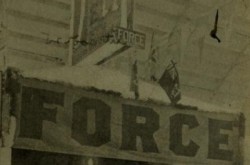
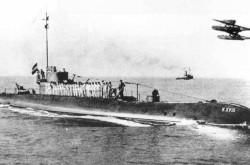
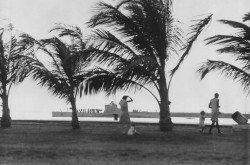
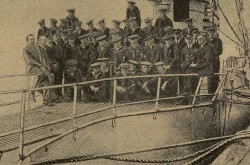
![A block of photographs showing some of the people involved in the bombing of beluga whales in the estuary and gulf of the St. Lawrence River. Anon., “La chasse aux marsouins [sic]. » Le Devoir, 15 August 1929, 6.](/sites/default/files/styles/thumbnail_7/public/2024-09/Le%20Devoir%2015%20aout%201929%20page%206.jpg?h=584f1d27&itok=TppdLItg)

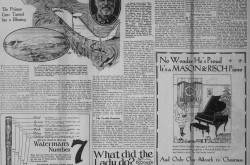

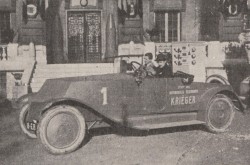
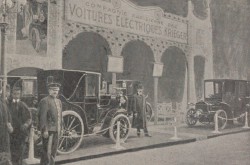

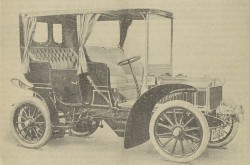


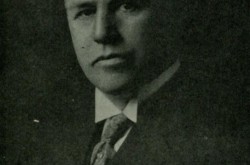
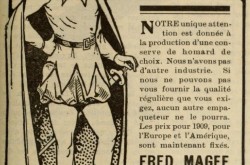
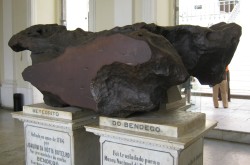
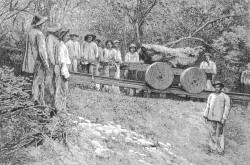
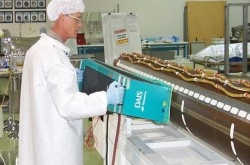
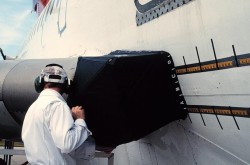
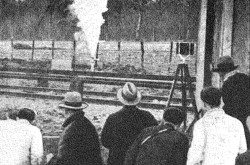
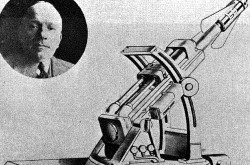
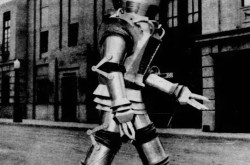

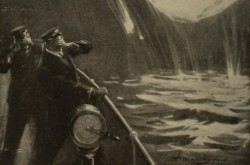
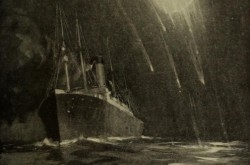
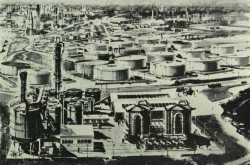
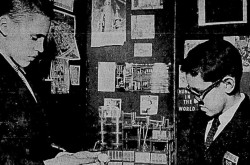
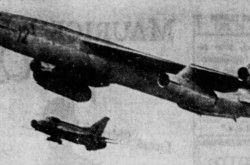
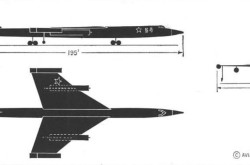
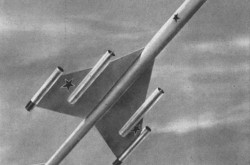

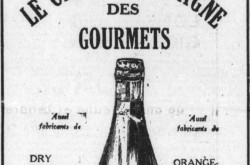
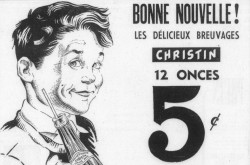

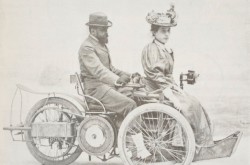
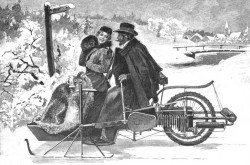

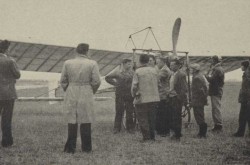
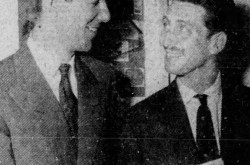
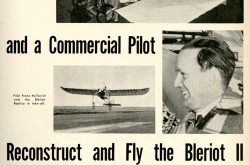
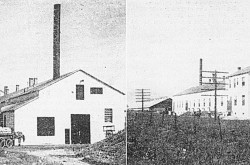

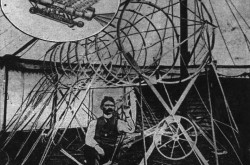

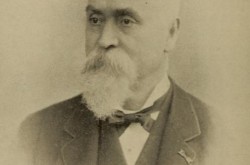
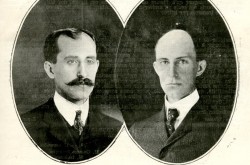
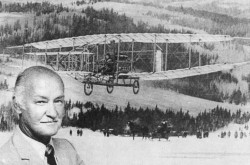
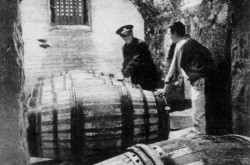
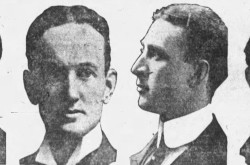
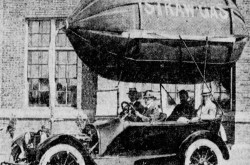

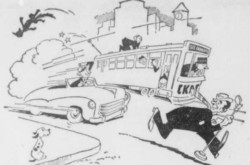

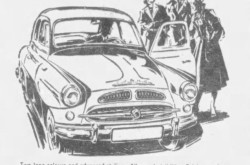
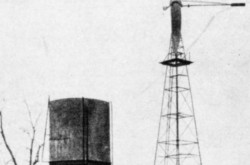
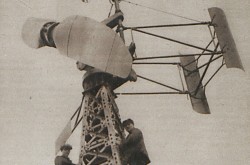
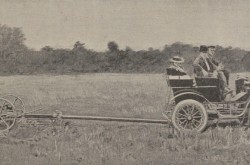

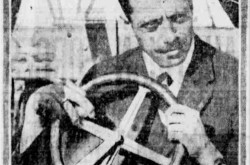

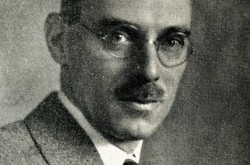
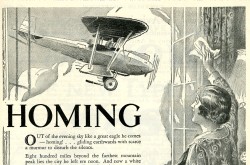

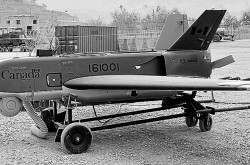


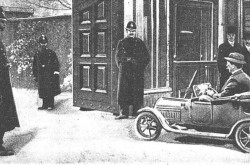
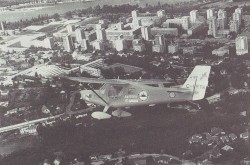
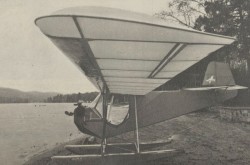
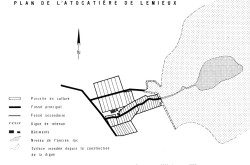

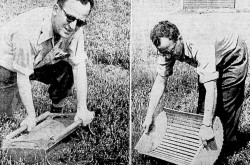
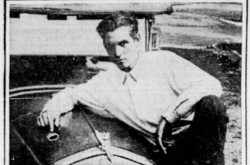
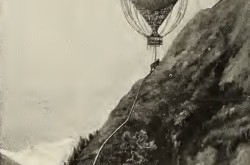


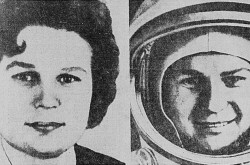
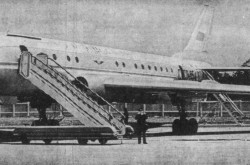
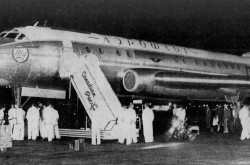
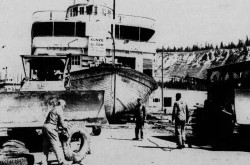
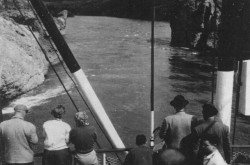
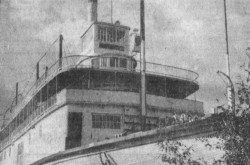

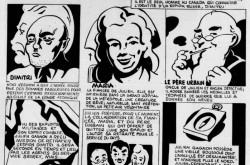
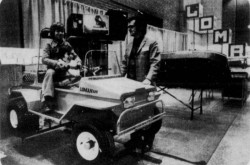

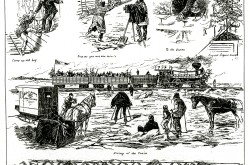
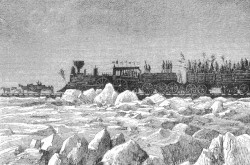
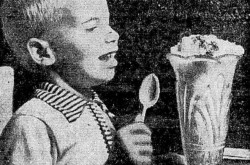
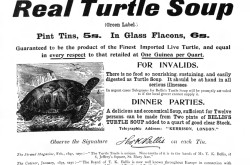


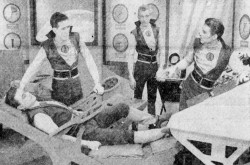

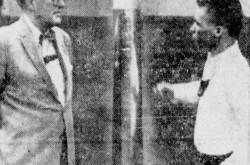


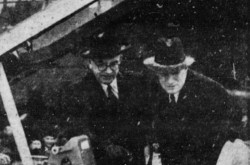
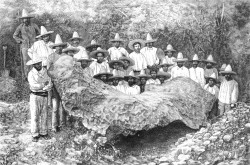
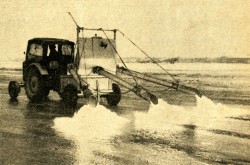

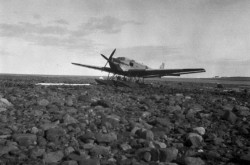

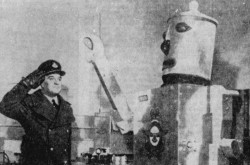
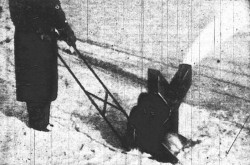


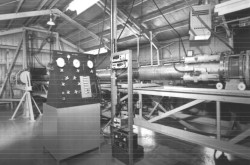

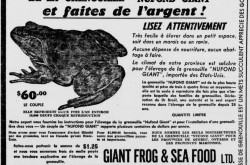
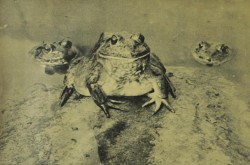

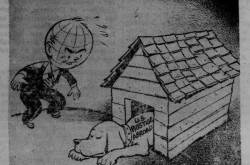
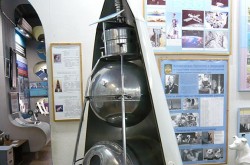



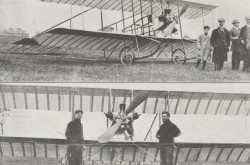


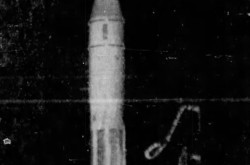
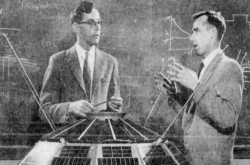
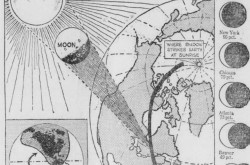

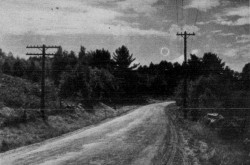
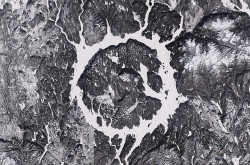




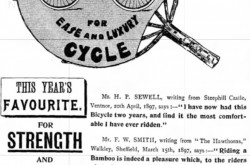
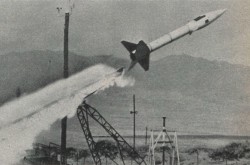
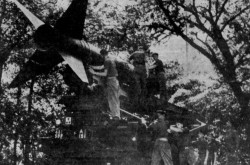

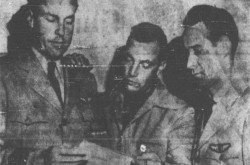
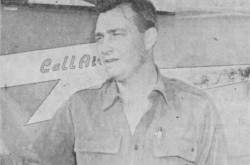
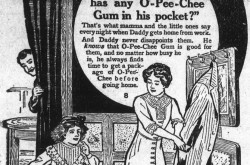

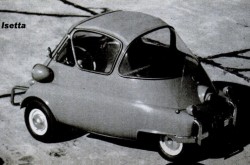
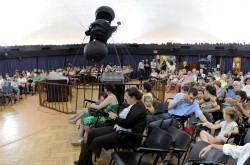
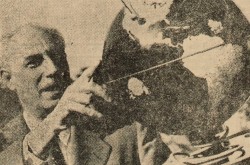





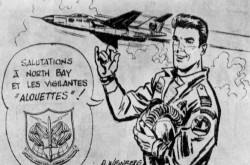
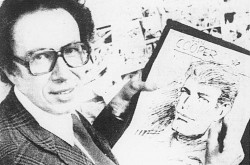


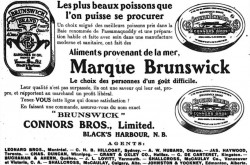
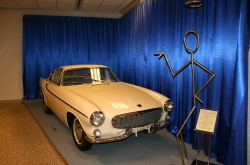

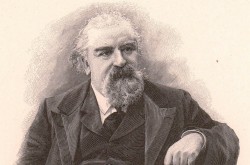


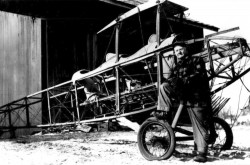

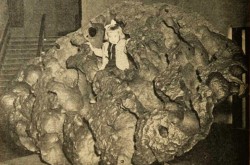
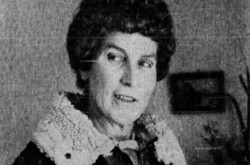

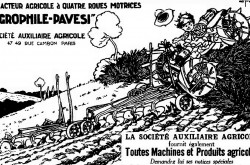
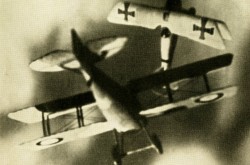


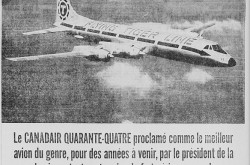


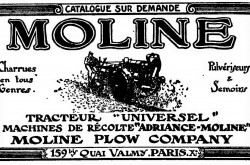


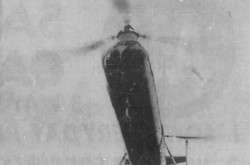

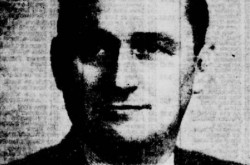
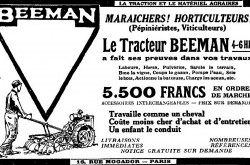
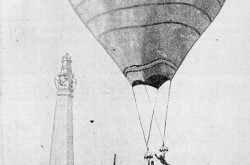

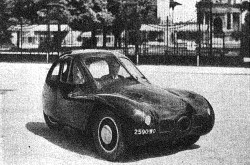
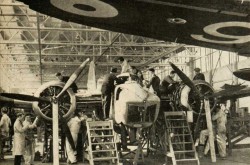


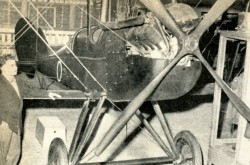
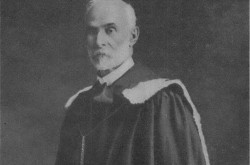
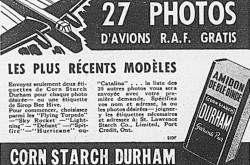
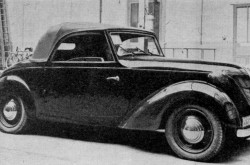

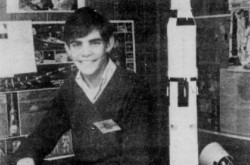

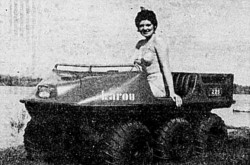
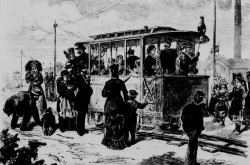
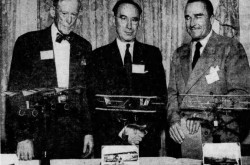




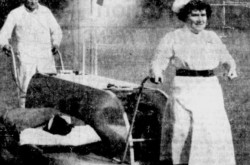

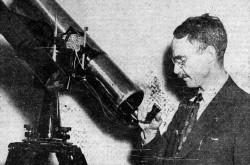

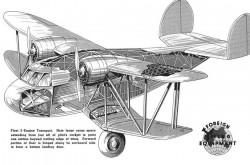
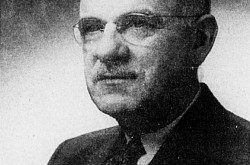
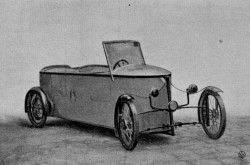

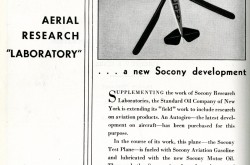

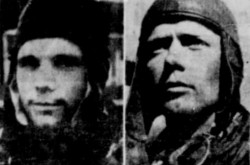


![Peter Müller at the controls [sic] of the Pedroplan, Berlin, Germany, March 1931. Anon., “Cologne contre Marseille – Le mystère du ‘Pédroplan.’ [sic]” Les Ailes, 2 April 1931, 14.](/sites/default/files/styles/thumbnail_7/public/2021-04/Les%20Ailes%202%20avril%201931%20version%20big.jpg?h=eafd0ed4&itok=WnBZ5gMf)
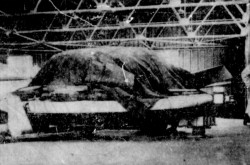
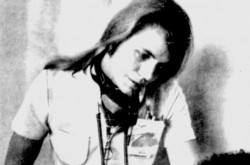
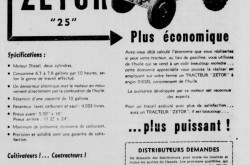
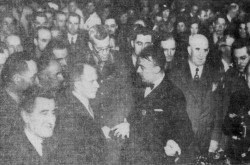
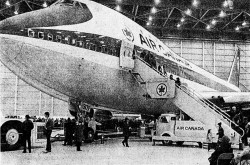
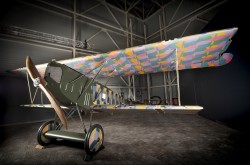

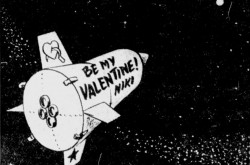
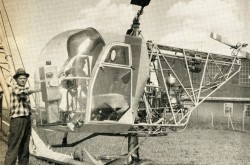


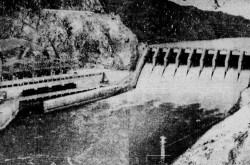
![One of the first de Havilland Canada Chipmunk imported to the United Kingdom. Anon., “De Havilland [Canada] DHC-1 ‘Chipmunk.’” Aviation Magazine, 1 January 1951, cover.](/sites/default/files/styles/thumbnail_7/public/2021-01/Aviation%20magazine%201er%20janvier%201951%20version%202.jpg?h=2f876e0f&itok=DM4JHe5C)

